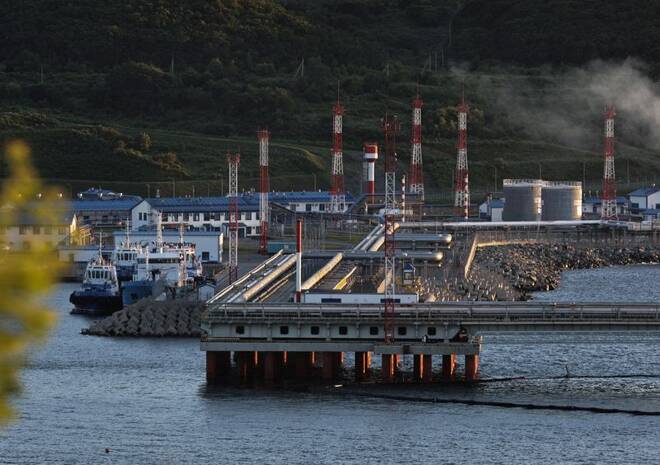Advertisement
Advertisement
Oil dips 1.5% ahead of OPEC+ meeting, EU Russian oil ban
By:
By Laila Kearney (Reuters) - Oil prices edged lower in early Asian trade on Friday as the U.S. dollar pared some losses, while easing COVID-19 curbs in two Chinese cities limited losses.
By Arathy Somasekhar
HOUSTON (Reuters) -Oil futures slipped 1.5% in choppy trading on Friday ahead of a meeting of the Organization of the Petroleum Exporting Countries and its allies (OPEC+) on Sunday and an EU ban on Russian crude on Monday.
Brent crude futures settled down $1.31, a 1.5% drop, at $85.57 per barrel. U.S. West Texas Intermediate (WTI) crude futures fell $1.24, or 1.5%, to $79.98 per barrel.
Both contracts dipped in and out of negative territory, but notched their first weekly gains at around 2.5% and 5%, respectively, after three consecutive weeks of drops.
“Traders will be hesitant to be short over the weekend if there are growing rumblings that OPEC might try to shock and awe the market at their weekend meeting,” said Phil Flynn, an analyst at Price Futures group.
OPEC+ is widely expected to stick to its latest target of reducing oil production by 2 million barrels per day (bpd) when it meets on Sunday, but some analysts believe that crude prices could fall if the group does not make further cuts.
“Crude carries significantly more weekend risk and could be extremely volatile on the open next week,” said Oanda analyst Craig Erlam, a view echoed by other analysts.
Russian oil output could fall by 500,000 to 1 million bpd early in 2023 due to the European Union ban on seaborne imports from Monday, two sources at major Russian producers said.
Poland agreed to the EU’s deal for a $60 per barrel price cap on Russian seaborne oil, allowing the bloc to move forward with formally approving the deal over the weekend, Poland’s Ambassador to the EU, Andrzej Sados, said.
European Commission President Ursula von der Leyen said the Russian oil price cap will be adjustable over time so that the union can react to market developments.
Russian Urals crude traded at around $70 a barrel on Thursday afternoon. The cap was designed to limit revenues to Russia while not resulting in an oil price spike.
Sending bullish signals, China is set to announce an easing of its COVID-19 quarantine protocols within days, sources told Reuters, which would be a major shift in policy in the world’s second-biggest oil consumer, although analysts warn a significant economic reopening is likely months away.
The U.S. oil rig count, an indicator of future production, remained unchanged this week, according to data from Baker Hughes. Worries also accelerated that U.S. shale can no longer boost production at a short notice. [[RIG/U]
Government data also showed that U.S. employers added more jobs than expected in November while average hourly earnings also increased, potentially giving the Federal Reserve more incentive to raise interest rates.
Money managers cut their net long U.S. crude futures and options positions in the week to Nov. 29, the U.S. Commodity Futures Trading Commission (CFTC) said.
(Reporting by Arathy Somasekhar in HoustonAdditional reporting by Mohi Narayan in New DelhiEditing by Marguerita Choy and Matthew Lewis)
About the Author
Reuterscontributor
Reuters, the news and media division of Thomson Reuters, is the world’s largest international multimedia news provider reaching more than one billion people every day. Reuters provides trusted business, financial, national, and international news to professionals via Thomson Reuters desktops, the world's media organizations, and directly to consumers at Reuters.com and via Reuters TV. Learn more about Thomson Reuters products:
Advertisement
